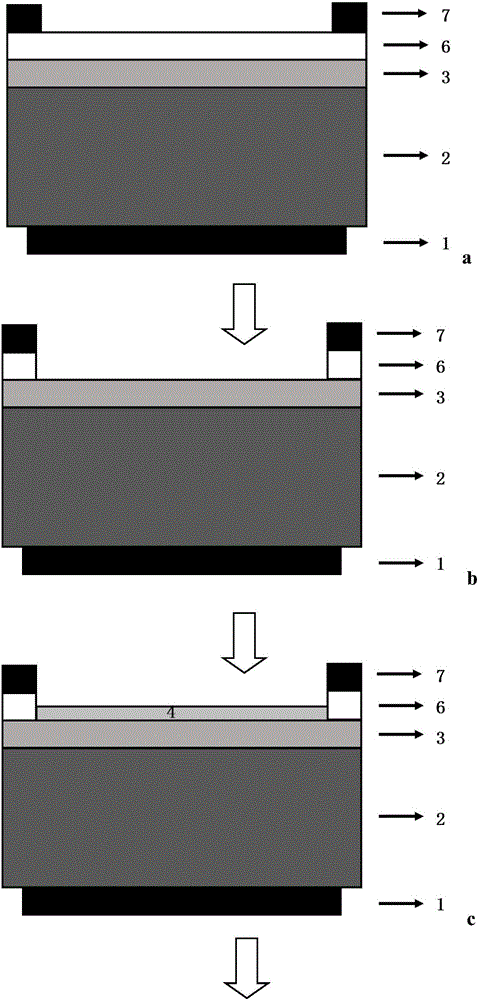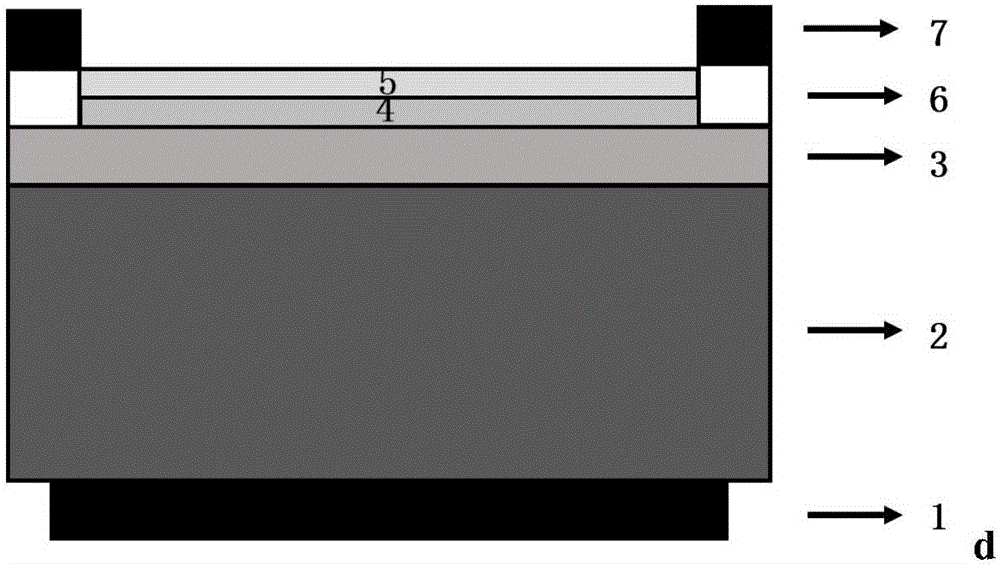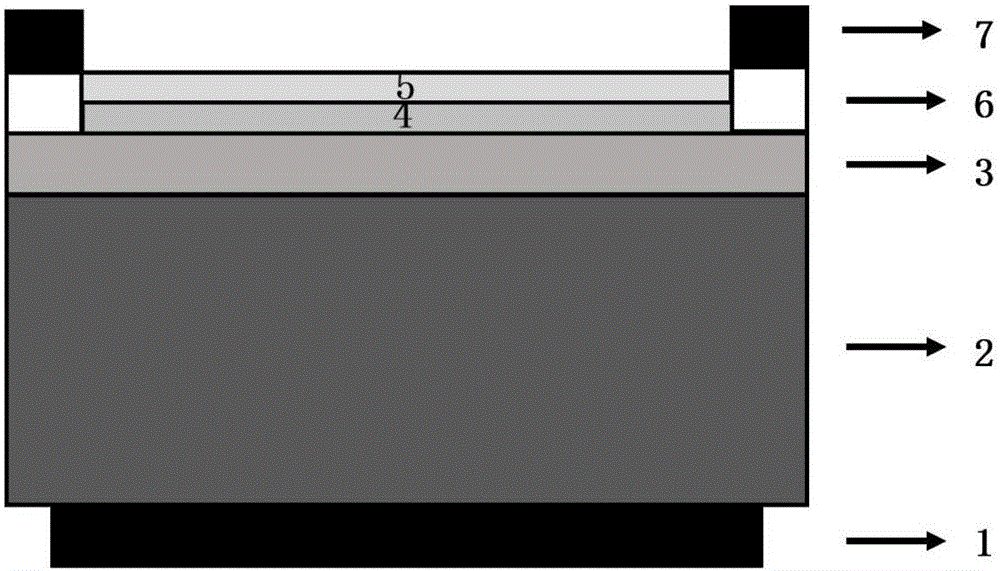Graphene/gallium arsenide solar cell preparation method
A solar cell and gallium arsenide technology, applied in the field of solar energy, can solve the problems of only 3.36% efficiency and unsatisfactory effect, and achieve the effects of facilitating industrial application, improving photoelectric conversion efficiency, and increasing fill factor
- Summary
- Abstract
- Description
- Claims
- Application Information
AI Technical Summary
Problems solved by technology
Method used
Image
Examples
preparation example Construction
[0024] The invention provides a method for preparing a graphene / gallium arsenide solar cell, comprising the following steps:
[0025] 1) Prepare a window layer on the surface of the gallium arsenide epitaxial wafer, and then prepare a heavily doped gallium arsenide cap layer on the surface of the window layer;
[0026] 2) preparing a front electrode on the surface of the heavily doped gallium arsenide cap layer, and preparing a back electrode on the surface of the gallium arsenide epitaxial wafer away from the window layer;
[0027] 3) The heavily doped gallium arsenide cap layer between the front electrode grid lines is etched by a chemical etching method to expose the window layer;
[0028] 4) preparing a graphene layer on the surface of the exposed window layer;
[0029] 5) preparing an anti-reflection layer on the surface of the graphene layer to obtain the graphene / gallium arsenide solar cell.
[0030] In the present invention, gallium arsenide epitaxial wafers are firs...
Embodiment 1
[0082] 1) Epitaxial growth of 0.5 μm thick n-type GaAs buffer layer, 0.1 μm thick n-type AlGaAs back field, 3.2 μm thick n-type GaAs base layer, 0.5 μm thick p-type GaAs emitter layer on n-type GaAs substrate by MOCVD method, Then continue to epitaxially grow the p-type AlGaAs window layer with a thickness of 0.03 μm and the p-type heavily doped GaAs cap layer with a thickness of 0.5 μm;
[0083] 2) The n-type electrode of NiGeAu system is evaporated by electron beam on the lower surface as the back electrode, and the p-type electrode of TiPdAg system is evaporated by electron beam on the cap layer on the upper surface as the front electrode.
[0084] 3) Soak the epitaxial wafer in acetone at 60°C for half an hour, then rinse it with isopropanol, ethanol and deionized water; prepare a solution with a ratio of hydrochloric acid to water of 1:1, soak the epitaxial wafer for two minutes and then rinse it; Cover the hat layer pattern to be protected on the upper surface with photo...
Embodiment 2
[0095] 1) Epitaxial growth of 0.5 μm thick n-type GaAs buffer layer, 0.1 μm thick n-type AlGaAs back field, 3.2 μm thick n-type GaAs base layer, 0.5 μm thick p-type GaAs emitter layer on n-type Ge substrate by MOCVD method, Then continue to epitaxially grow the p-type AlGaAs window layer with a thickness of 0.03 μm and the p-type heavily doped GaAs cap layer with a thickness of 0.5 μm;
[0096] 2) The n-type electrode of NiGeAu system is evaporated by electron beam on the lower surface as the back electrode, and the p-type electrode of TiPdAg system is evaporated by electron beam on the cap layer on the upper surface as the front electrode.
[0097]3) Thin the epitaxial wafer substrate to the required thickness, soak it in acetone at 60°C for half an hour, then rinse it with isopropanol, ethanol and deionized water, and dry it with nitrogen; prepare piranha lotion and soak the epitaxial wafer Thirty seconds later, rinse it off and dry it with nitrogen; cover the cap layer to b...
PUM
 Login to View More
Login to View More Abstract
Description
Claims
Application Information
 Login to View More
Login to View More - R&D
- Intellectual Property
- Life Sciences
- Materials
- Tech Scout
- Unparalleled Data Quality
- Higher Quality Content
- 60% Fewer Hallucinations
Browse by: Latest US Patents, China's latest patents, Technical Efficacy Thesaurus, Application Domain, Technology Topic, Popular Technical Reports.
© 2025 PatSnap. All rights reserved.Legal|Privacy policy|Modern Slavery Act Transparency Statement|Sitemap|About US| Contact US: help@patsnap.com



